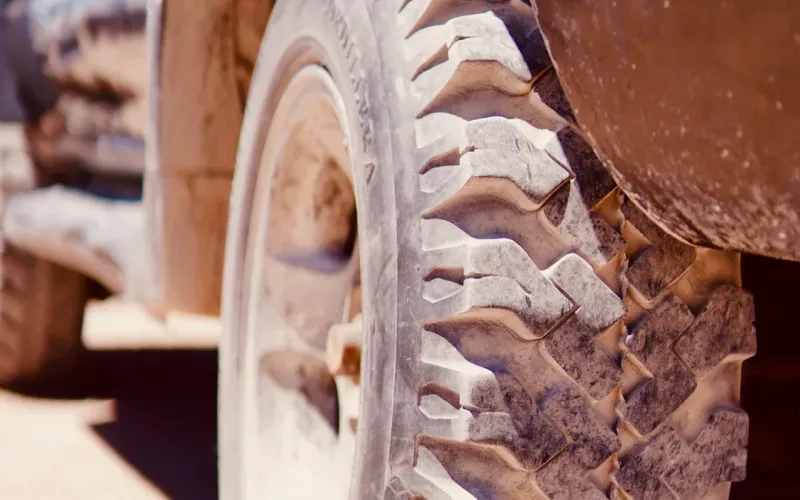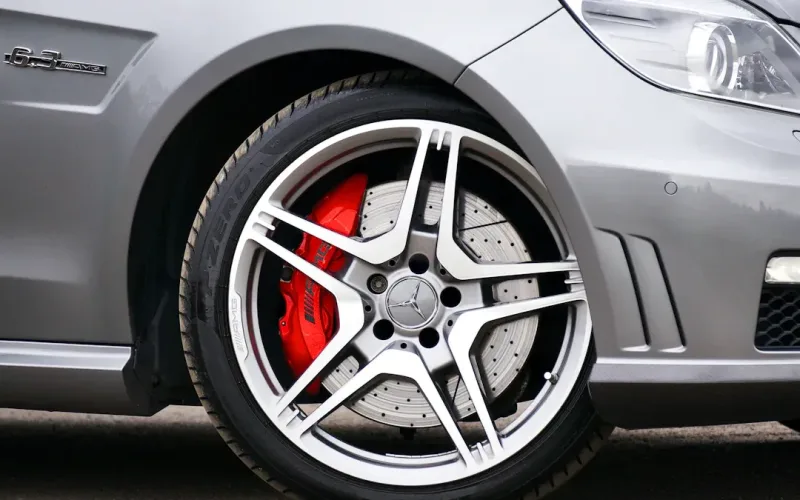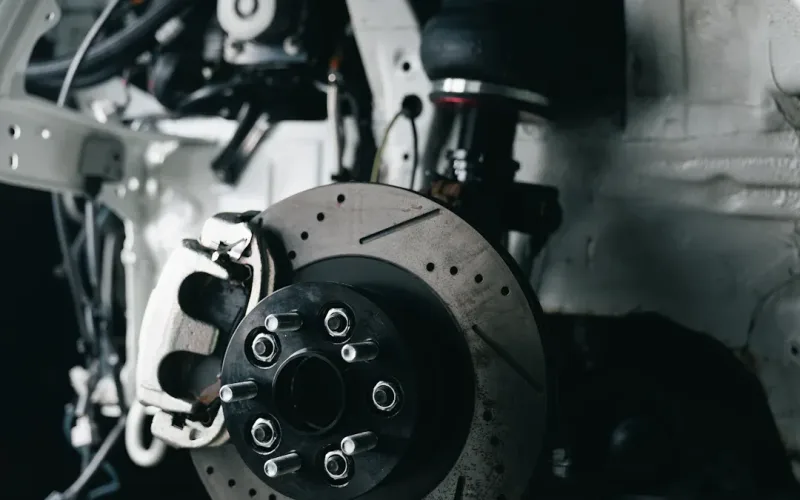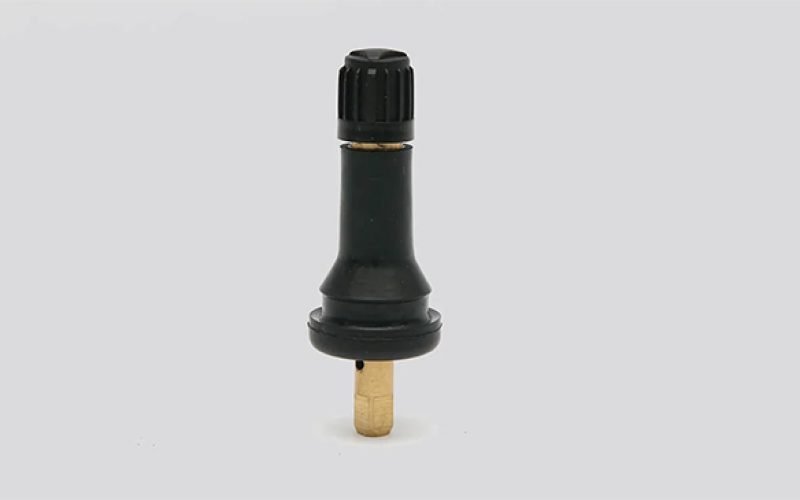

admin1
June 12, 2025
Clip On Tire Weights Types and Sizes You Should Know
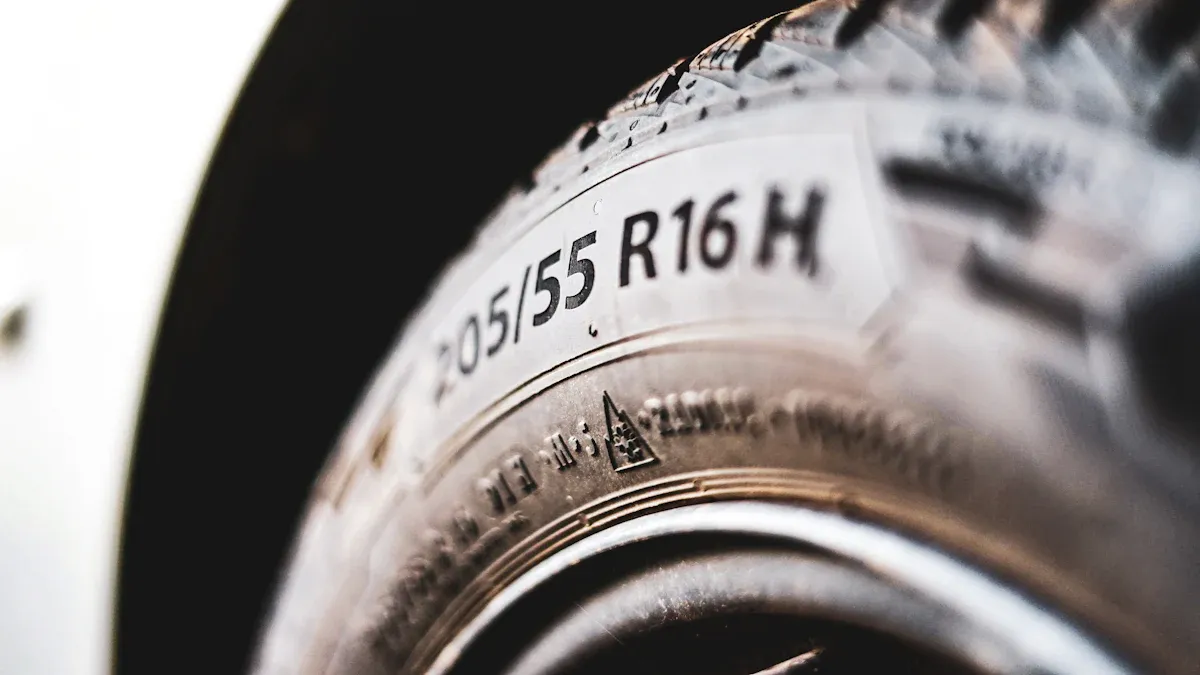
When you balance your wheels, you use clip on tire weights to keep your ride smooth and safe. These wheel weights come in different types like lead, zinc, steel, and hybrid plastic-steel to match various automotive needs. Manufacturers offer sizes from 0.25 oz (5g) up to 3 oz (85g), so you can find the right fit for your tire and vehicle. Over 65% of clip-on weights serve the automotive sector, helping millions of vehicles every year. Choosing the correct wheel weights depends on your wheel material, vehicle type, and local rules about materials.
What Are Clip-On Tire Weights?
Purpose and Function of Clip-On Weights
You use clip-on weights to fix problems that happen when your wheels are not balanced. When a wheel is out of balance, you might feel shaking or vibration while driving. This happens because the weight is not spread evenly around the wheel. Clip-on tire weights help you achieve proper wheel balance by attaching to the rim and correcting these imbalances.
There are two main types of imbalance:
- Static imbalance: This causes the wheel to shake up and down.
- Dynamic imbalance: This causes the wheel to move side to side.
Clip-on weights solve both problems by adding weight where it is needed. You place one or two weights on the rim, depending on the type of imbalance. This process improves ride comfort, extends tire life, and helps you save fuel. Many experts, like those from Hunter Engineering, say that balancing all four wheels with the right tire balance weights is important for safety and performance.
Here is a table that shows how clip-on weights compare to other wheel balancing methods:
| Aspect | Clip-On Tire Weights | Tape-On Weights | Internal Balancing Compounds |
|---|---|---|---|
| Attachment Method | Clipped onto rim flange using a hammer | Attached inside wheel with adhesive tape | Settles inside tire during rotation |
| Weight Increments | 1/4 ounce steps | Strips cut to length | N/A |
| Material | Steel or zinc alloys | Lead-free, often zinc or steel | N/A |
| Placement | Visible on rim flange | Hidden inside wheel | Internal, invisible |
| Balancing Type | Constant external balance | Dynamic balance, hidden | Lifetime balance, may lapse at speed changes |
How Clip-On Weights Attach to Wheels
You attach clip-on weights by snapping them onto the rim flange of your wheel. This method uses a special clip that holds the weight tightly in place. Most often, you use a hammer to tap the weight onto the rim. The design makes sure the weight stays secure, even when you drive on rough roads.
Clip-on weights work well on steel wheels because the rim lip gives a strong grip. You can also use them on some aluminum wheels if the clip matches the rim shape. Many users have shared that clip-on weights fit different wheel types, including OEM and aftermarket steel wheels, without problems. The weights stay in place and keep your wheels balanced for a long time.
Tip: Always check that the clip-on weight matches your wheel type for the best fit and lasting balance.
Wheel balancing machines help you find the right spot for each weight. The machine measures rim width, flange distance, and wheel diameter. Then, it tells you where to place the clip-on weights for the best balance. This process ensures your wheel weights do their job and keep your ride smooth.
Different Types of Clip-On Weights
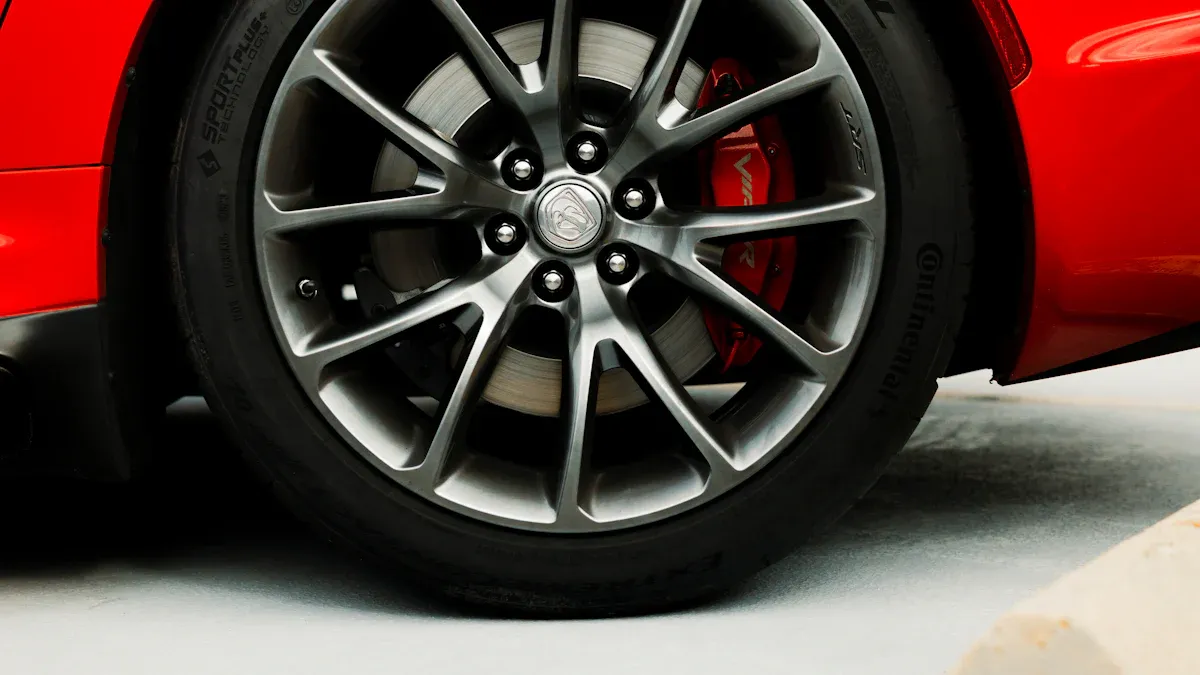
When you look at the types of wheel weights, you find several options for balancing your tires. The different types of clip-on weights each have unique features, benefits, and best-use cases. You need to know how each type works so you can choose the right one for your vehicle and driving needs.
Lead Clip-On Weights
Lead wheel weights have been the industry standard for many years. You often see these used because lead is dense and easy to shape. This means you can use less material to achieve the right balance. Lead clip-on weights fit tightly onto the rim and stay secure, even when you drive on rough roads.
You benefit from lead wheel weights in several ways:
- You get precise balancing because the material can be cut to exact sizes.
- The weights are flexible and conform to the shape of your wheel.
- They resist corrosion, so your wheels look good and do not stain.
Many manufacturers use advanced attachment methods, such as 3M™ Automotive Attachment Tape, to make sure the weights stay in place. You can also find lead wheel weights that support automated installation, which helps with consistency and speed in large shops.
Note: Some regions have restrictions on lead wheel weights due to environmental concerns. Always check your local regulations before you choose this type.
You can see how lead clip-on weights compare to other materials in the table below:
| Material | Advantages | Disadvantages | Best Use Cases |
|---|---|---|---|
| Lead | High density, precise balance, flexible, long-standing standard | Environmental and health risks, regulatory restrictions | Older vehicles, regions without lead bans |
Zinc Clip-On Weights
Zinc wheel weights have become popular as an alternative to lead. You get a non-toxic and recyclable product that still provides effective balancing. Zinc clip-on weights offer good corrosion resistance, which makes them a smart choice if you drive in wet or salty conditions.
You will notice these benefits with zinc clip-on weights:
- They are lighter than steel weights, which helps with precise balancing.
- They resist rust better than steel, so they last longer.
- Zinc is safe for the environment and does not pose health risks.
The automotive industry is moving toward zinc and other sustainable materials. Many regions now require lead-free wheel weights, so zinc is often the best option for new vehicles and environmentally conscious drivers.
Tip: Zinc clip-on weights work well for vehicles exposed to harsh weather or road salt. You can use them on most modern wheels with flanges.
Steel Clip-On Weights
Steel wheel weights are another common choice. You get a durable and cost-effective solution for balancing your tires. Steel clip-on weights are strong and can handle heavy-duty use, which makes them ideal for trucks, SUVs, and commercial vehicles.
Here are some reasons you might choose steel clip-on weights:
- They are tough and resist damage from impacts or rough roads.
- Steel is recyclable, which supports sustainability goals.
- With proper coating, steel weights resist corrosion and last a long time.
You can see how steel, zinc, and lead compare in the table below:
| Material | Advantages | Disadvantages | Best Use Cases |
|---|---|---|---|
| Steel | Durable, cost-effective, recyclable, corrosion-resistant with coating | Heavier than zinc, can rust if uncoated | Heavy-duty vehicles, budget-conscious users |
| Zinc | Corrosion resistant, eco-friendly, non-toxic | Higher cost than steel, less dense than lead | Corrosive environments, eco-friendly users |
| Lead | High density, flexible, precise | Environmental risks, regulatory limits | Older vehicles, unrestricted regions |
You often find steel clip-on weights on commercial and heavy-duty vehicles. These weights pass strict durability and corrosion tests, such as 3,000-hour salt-spray testing required by companies like Volvo Trucks. Advanced coatings, like physical vapor deposition (PVD), help steel weights resist rust and stay attached under tough conditions.
Remember: Always match the type of clip wheel weights to your wheel material and driving needs. This ensures the best performance and safety for your vehicle.
Hybrid and Plastic-Steel Clip-On Weights
You can find hybrid and plastic-steel clip-on weights as modern solutions for balancing wheels. These weights combine the strength of steel with the protective qualities of plastic. Manufacturers design them to fit a wide range of vehicles, including cars, SUVs, and light trucks. You get the benefit of a steel core, which provides the necessary mass for balancing, while the plastic coating helps prevent corrosion and protects your wheel’s finish.
Hybrid clip-on weights often use a plastic shell that covers the steel. This shell acts as a barrier against moisture, salt, and road debris. You will notice that these weights do not scratch or damage alloy wheels. Many tire shops recommend hybrid clip-on weights for aluminum rims because the plastic layer reduces the risk of galvanic corrosion between the wheel and the weight.
Here are some reasons you might choose hybrid or plastic-steel clip-on weights:
- You want to avoid rust and corrosion on your wheels.
- You need a weight that will not leave marks or stains on alloy rims.
- You prefer a product that is easy to handle and install.
Tip: Hybrid clip-on weights work well in regions with harsh winters or where road salt is common. The plastic coating keeps your wheels looking new.
You can see hybrid and plastic-steel clip-on weights as part of the growing list of wheel weight options. These products give you more choices when you want to balance your tires safely and protect your wheels at the same time.
Legal and Environmental Considerations
You need to know that the type of clip-on weights you use can affect both the environment and your compliance with local laws. In recent years, many governments and environmental agencies have studied the impact of different materials used in clip-on weights. Their findings help you make better decisions when choosing clip-on wheel weight options.
The California Department of Toxic Substances Control completed a Life Cycle Assessment that compared lead, zinc, and steel clip-on weights. The study found that when lead or zinc weights fall off on the road, they create higher risks for human health and the environment than steel weights. Zinc, while less toxic than lead, still poses environmental challenges because zinc losses during use can be more harmful than lead in some cases. Steel clip-on weights, especially those made from recycled materials, show lower toxicity and less impact during manufacturing. This makes steel a preferred choice for eco-friendly drivers.
You should also know that the United States Environmental Protection Agency (EPA) has reviewed the risks of lead in clip-on weights. The EPA’s proposed rules request data about how much lead from clip-on weights enters the environment, how people might get exposed, and how often these weights are lost from vehicles. The EPA also looks at how often you use clip-on weights compared to adhesive weights and studies how these weights spread in the environment through abrasion, washout, or street sweeping. These reviews help shape future regulations and encourage the use of safer materials.
Here is a summary of key points you should consider:
| Material | Environmental Risk | Legal Status in Many Regions | Preferred Use |
|---|---|---|---|
| Lead | High | Often restricted or banned | Older vehicles, limited |
| Zinc | Moderate | Allowed, but monitored | Corrosive environments |
| Steel | Low | Widely accepted | Most vehicles |
| Hybrid/Plastic-Steel | Very Low | Accepted | Alloy wheels, eco-friendly users |
Note: Many states and countries now restrict or ban lead clip-on weights. Always check your local laws before you choose a material.
You play an important role in protecting the environment when you select the right clip-on weights. By choosing steel or hybrid options, you help reduce toxic metal pollution on roads and support safer recycling practices. You also stay in compliance with changing regulations and help keep your community safe.
Clip-On Tire Weights Sizes and Fitment

Common Size Increments for Clip-On Weights
When you balance your wheels, you need to choose the right size of clip-on weights. Manufacturers produce these weights in small increments so you can fine-tune the balance of your tire. Most clip-on weights come in increments of 0.25 ounces (about 7 grams). Some brands offer even finer steps, such as 0.01 ounces, to help you achieve precise balance. This range lets you match the exact amount of weight needed for each wheel.
You can see the typical specifications for clip-on weights in the table below:
| Specification Aspect | Details |
|---|---|
| Balancing Increments | 0.25 or 0.01 ounces |
| Accuracy | +/- 1 gram (0.035 oz) |
| Resolution | 0.01 ounce, 1.4° |
| Weight Placement Indicators | Tiered indicators for out-of-sight placement |
| Included Wheel Weights Kit | Mixed clip-on steel weights |
| Balancing Modes | Dynamic, Static, Performance Alloy |
| Max Tire Diameter | 47 inches (1,194 mm) |
| Max Tire Weight | 145 lbs (65 kg) |
You will find that these increments help you correct both small and large imbalances. The accuracy and resolution of modern balancing machines ensure you use only as much weight as needed. This keeps your ride smooth and helps your tires last longer.
Tip: Always use the smallest possible increment to achieve balance. This prevents over-correction and keeps your wheels running true.
Wheel Compatibility: Aluminum, Steel, and Specialty Applications
Not all wheels work the same way with clip-on weights. You need to know which wheels are best suited for this type of weight. Steel wheels are the most compatible. The clip-on weights grip the rim securely and stay in place, even on rough roads. You can install them quickly, and they hold up well under tough conditions.
Aluminum wheels, also called alloy wheels, present more challenges. The clip mechanism can scratch or damage the rim. The weights also stand out visually, which some drivers do not like. For these wheels, many experts recommend using stick-on weights instead. These protect the rim and keep the look clean.
Specialty wheels, such as custom or performance designs, may not accept clip-on weights at all. The rim shape or finish can prevent a secure fit. In these cases, stick-on weights are usually the better choice.
Here is a quick comparison:
| Feature | Steel Wheels (Clip-On) | Aluminum Wheels (Clip-On) | Specialty Wheels (Clip-On) |
|---|---|---|---|
| Compatibility | Best fit, secure grip | Limited, risk of rim damage | Often not compatible |
| Durability | High, withstands rough use | Can scratch or corrode | May not stay secure |
| Aesthetics | Visible, less concern | Visible, often unwanted | Visible, may spoil design |
| Installation | Quick, secure | Needs care, risk of damage | Professional install needed |
| Recommended Alternative | Clip-on weights | Stick-on weights | Stick-on weights |
- Clip-on weights work best on steel wheels.
- Alloy wheels often need stick-on weights to avoid rim damage.
- Specialty wheels may not fit clip-on weights at all.
- Professional installation helps prevent problems with any wheel type.
Note: Always check your wheel type before choosing clip-on weights. This ensures a secure fit and protects your rims.
Selecting the Right Size for Your Application
You need to select the correct size of clip-on weights for your specific tire and wheel. Start by using a tire balancing machine. This tool tells you where the imbalance is and how much weight you need. Choose weights in common increments like 1/4 oz, 1/2 oz, or 1 oz. These steps let you match the exact correction needed.
Follow these steps for the best results:
- Clean the rim surface to remove dirt and debris.
- Use the balancing machine to find the heavy spot on the wheel.
- Select the right size of clip-on weights based on the machine’s recommendation.
- Attach the weight firmly to the center ridge of the rim for maximum stability.
- Place the weight opposite the valve stem if possible. This helps with both balance and appearance.
- Check the attachment to make sure the weight is secure.
- Re-test the wheel balance after installation to confirm that vibration is gone.
Performance depends on secure attachment and accurate placement. Regularly inspect your clip-on weights for signs of wear or detachment. Adjust or replace them as needed to keep your ride smooth.
Callout: Always use the minimum effective weight to achieve balance. Too much weight can cause new problems and affect your tire’s performance.
By following these steps, you ensure that your clip-on weights provide the best possible balance for your wheels. This keeps your vehicle safe and your tires in top condition.
Applications of Clip-On Tire Weights
Passenger Car Applications
You see clip-on weights used in passenger cars more than in any other vehicle type. These weights help you keep your wheels balanced, which means you get a smoother ride and better control. When you visit an automotive service center, technicians often choose clip-on weights because they attach quickly and stay secure. This method works well in busy shops where speed and accuracy matter.
Passenger cars make up about 72% of all tire balancing jobs worldwide. In 2023, over 320 million passenger cars had their tires balanced, usually every 10,000 to 15,000 kilometers. You benefit from this regular maintenance because it improves ride comfort, extends tire life, and helps save fuel. Even as new balancing methods appear, clip-on weights remain a top choice for their cost-effectiveness and reliability. Automotive professionals trust them for both new and older vehicles, especially in regions with less strict rules about materials.
Tip: If you drive a passenger car, ask your technician about clip-on weights during your next tire service. They offer a proven solution for everyday driving needs.
Truck and SUV Applications
Trucks and SUVs need strong and reliable wheel balancing solutions. You often drive these vehicles on rough roads or carry heavy loads. Clip-on weights, especially those made from steel, give you the durability you need. Research shows that steel alloys in clip-on weights can handle up to 217,000 cycles of stress, which means they last a long time under tough conditions.
You find that automotive experts recommend clip-on weights for trucks and SUVs because they resist vibration and stay attached even on bumpy terrain. These weights help you keep your wheels balanced, which leads to better fuel efficiency—sometimes up to 20% improvement. You also get longer tire and suspension life, which saves you money over time.
- Clip-on weights for trucks and SUVs use high-strength materials like stainless steel.
- The clip and clamp design keeps the weight secure on steel rims.
- Safety features include corrosion protection and shock resistance.
- You select the right weight based on your vehicle’s size and load, with heavy-duty options available for larger trucks.
Specialty and Performance Vehicle Applications
Specialty and performance vehicles have unique needs. You want precise wheel balance for high speeds and sharp handling. Clip-on weights play a key role in these automotive applications, especially when you use steel or hybrid designs. These weights provide the exact mass needed to balance custom wheels or performance tires.
You may drive a sports car, a classic vehicle, or a car with aftermarket wheels. In these cases, you need a solution that fits your specific rim type. Some specialty wheels require custom clip-on weights or special coatings to protect the finish. Automotive shops often use advanced balancing machines to place the weights in the best spot for top performance.
You see that common applications for clip-on weights include racing, show cars, and vehicles with unique wheel designs. By choosing the right weight and fit, you keep your ride smooth and safe, even at high speeds.
Tips for Proper Clip-On Weight Installation
Installing clip-on weights correctly helps you achieve proper wheel balance and keeps your vehicle safe. You want to make sure your wheels are perfectly balanced for all applications, whether you drive a passenger car, truck, or specialty vehicle. Follow these steps to get the best results from your wheel balancing process:
- Secure the tire and wheel assembly on a wheel balancing machine. This step helps you find the exact spot and amount of imbalance.
- Select the right size and style of clip-on weights that match your rim type. Using the correct clip ensures your wheels are perfectly balanced for all applications.
- Clean the rim flange. Remove any dirt, debris, or old weights so the new clip-on weights attach firmly.
- Mark the location on the rim where you need to place the weight. Accurate placement is key for balancing.
- Attach the clip-on weight at the marked spot. Use a wheel weight hammer or pliers. For alloy wheels, use rubber-coated tools to avoid scratches.
- Check that the weight is secure by gently tugging it. If it feels loose, reattach it to prevent it from falling off during driving.
- Re-test the wheel balance. Adjust the weights if needed until you achieve properly balanced tires.
- For dual-plane balancing, repeat the process on the opposite flange if your applications require it.
- Inspect all weights after installation. Make sure they are aligned and firmly attached.
Tip: Always use the correct clip style for your wheel type. Avoid over-hammering, which can damage the rim or the weight.
Safety matters during installation. Wear safety glasses, hearing protection, and sturdy shoes. Only trained professionals should perform tire mounting and wheel balancing. Never inflate an unsecured tire, and always follow manufacturer instructions for all applications.
By following these steps, you help extend tire life, improve fuel efficiency, and maintain a smooth ride. Clip-on weights play a vital role in wheel balancing for many applications. When you install them correctly, you ensure your wheels are perfectly balanced and ready for the road.
You need to choose the right clip on tire weights for your wheels to keep your ride safe and smooth. When you match the weight type to your rim and driving needs, you improve tire performance and reduce wear. Studies show that proper installation of clip on tire weights helps your vehicle stay stable and balanced. Always check your wheel material and follow local rules to get the best tire performance.
FAQ
What is the main difference between clip-on and stick-on wheel weights?
You attach clip-on weights to the rim flange. You use stick-on wheel weights by pressing them onto a clean, flat surface inside the wheel. Stick-on weights work best for alloy wheels or wheels without a suitable flange.
Can you use clip-on weights on all types of wheels?
You can use clip-on weights on most steel wheels. For many aluminum or specialty wheels, you should use adhesive wheel weights. These protect the rim and keep the wheel looking good.
How do you know which size clip-on weight to use?
You use a wheel balancing machine to find the imbalance. The machine tells you the exact size and placement for the weight. Always match the weight size to the machine’s recommendation for best results.
Do clip-on weights fall off easily?
You install clip-on weights with a secure clip. When you attach them correctly, they stay in place during normal driving. If you notice a missing weight, check for rim damage or improper installation.
Are stick-on weights better for custom or performance wheels?
You often choose stick-on weights for custom or performance wheels. Stick-on weights do not scratch the rim and allow for precise placement. Many performance shops recommend them for high-end or specialty wheels.
